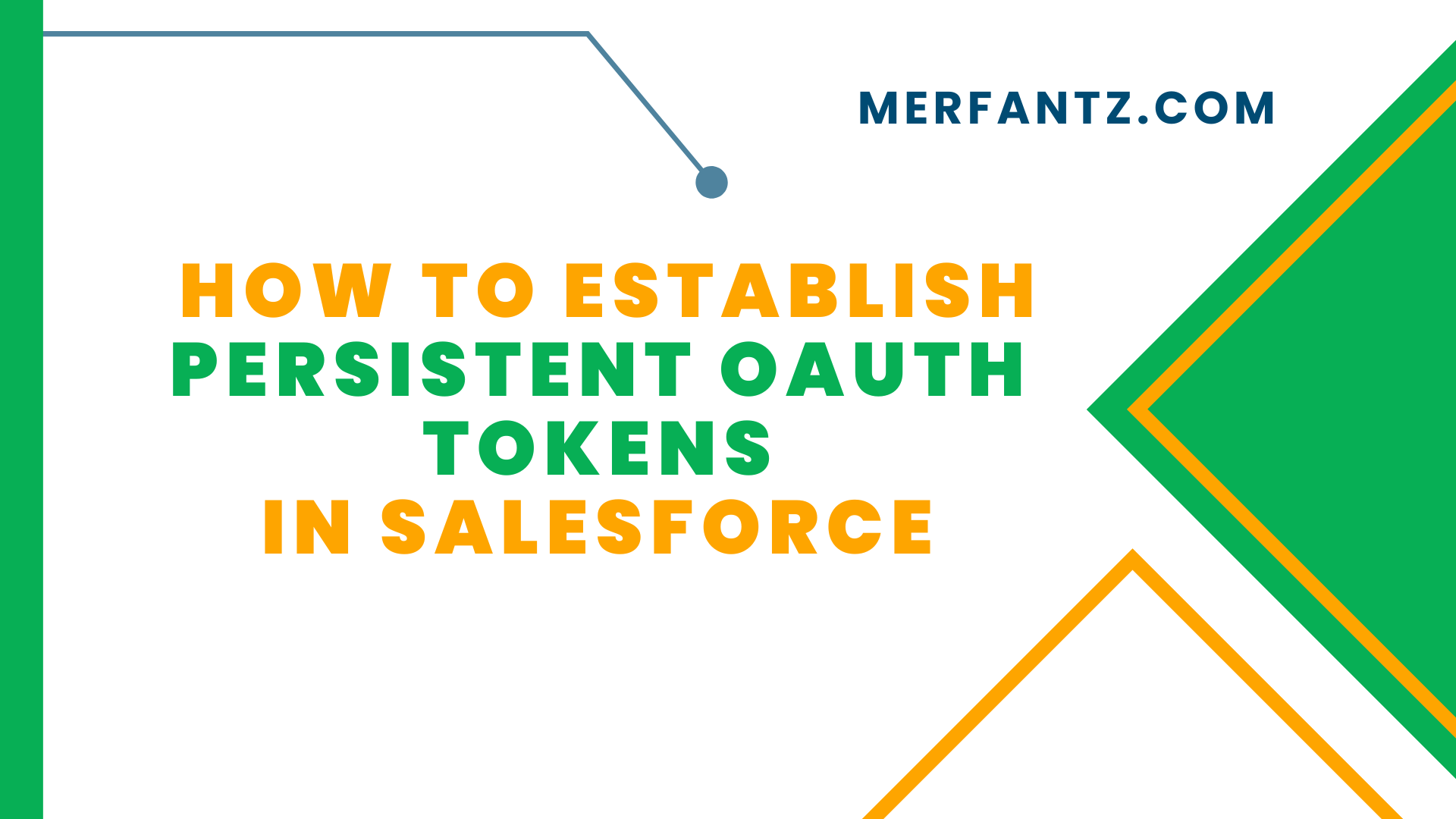Understanding OAuth in Salesforce
What is OAuth and its significance in Salesforce?
OAuth (Open Authorization) is a widely adopted protocol that plays a pivotal role in Salesforce integration. It serves as a secure and standardized method for granting third-party applications access to specific data and resources in Salesforce without revealing users’ credentials. OAuth acts as a trusted intermediary, enabling seamless data exchange while safeguarding sensitive information.
Salesforce leverages OAuth 2.0, which boasts enhanced security and improved user experience. This protocol enables various applications, such as mobile apps and web services, to connect with Salesforce and access authorized data. By adopting OAuth, businesses can embrace a granular access control mechanism, allowing users to authorize specific permissions for each connected app. With OAuth in place, you can maintain better control over data access, ensure the confidentiality of sensitive information, and streamline the integration process for a seamless user experience.
Key benefits of using OAuth tokens for authentication.
Using OAuth tokens for authentication in Salesforce offers numerous advantages. First and foremost, it eliminates the need to store users’ credentials in third-party systems, reducing the risk of potential data breaches. Instead, when users grant access to an app, Salesforce issues an access token, which the app uses for subsequent requests. This token-based authentication enhances security and minimizes the risk of unauthorized access.
Moreover, OAuth tokens come with built-in expiration mechanisms, ensuring that access is granted only for a limited period. This enhances security by reducing the window of vulnerability if a token is compromised. Additionally, OAuth tokens can be selectively revoked or refreshed, providing administrators greater control over connected applications and data access.
Preparing Your Salesforce Environment
Registering your application and obtaining the required credentials.
Before diving into Salesforce integration with OAuth, you must register your application as a connected app in the Salesforce environment. This process establishes a trusted relationship between your app and Salesforce, enabling the secure exchange of data. When registering the app, you’ll receive essential credentials, including a Client ID and a Client Secret. These credentials serve as a unique identifier and a shared secret for your application, respectively.
To register your app, navigate to the Salesforce setup menu, locate the “App Manager,” and create a new connected app. Provide relevant details, such as the app name, contact email, and callback URL, which is used during the OAuth flow. Salesforce will generate the Client ID and Client Secret upon successful registration, which you’ll need later during the authentication process.
Configuring the necessary permissions and scopes.
Once your app is registered, the next crucial step is to configure the necessary permissions and scopes for your connected app. Scopes define the specific permissions your app requires to access Salesforce resources on behalf of the user. These can include read, write, or even custom permissions, depending on your app’s functionality.
As an administrator, you have granular control over the permissions granted to connected apps. Go to the connected app’s settings and define the OAuth scopes based on your app’s requirements and the level of access it needs. Be cautious not to over grant permissions to safeguard your data and maintain a strong security posture.
Initiating OAuth Flow
Overview of the OAuth 2.0 authorization process.
The OAuth flow in Salesforce follows the standard OAuth 2.0 protocol, which consists of several steps to authenticate and authorize access. When a user initiates the OAuth flow by clicking on the “Connect” button in your application, your app redirects them to the Salesforce login page. Users enter their Salesforce credentials, and upon successful authentication, Salesforce prompts them to grant your app the necessary permissions.
Once the user consents, Salesforce issues an authorization code, which your app can exchange for an access token. This access token serves as proof of the user’s authorization and is used to make API requests to Salesforce on their behalf. To complete the OAuth flow, your app securely exchanges the authorization code for the access token by sending a POST request to the Salesforce token endpoint.
Step-by-step guide to initiating the OAuth flow.
To initiate the OAuth flow in your application, ensure that you have integrated the necessary Salesforce OAuth libraries or SDKs. When the user triggers the integration process, redirect them to the Salesforce login page with the appropriate parameters, including your app’s Client ID and the desired OAuth scopes.
Once the user logs in and consents to grant access, Salesforce redirects them back to your app with an authorization code appended to the callback URL. Your app then securely exchanges this code for an access token by making a server-to-server POST request to the Salesforce token endpoint using your Client ID, Client Secret, authorization code, and other required parameters.
Upon receiving the access token, your application can use it to authenticate subsequent API requests to Salesforce on behalf of the user. Remember to handle token expiration and implement a token refresh mechanism to maintain persistent access.
Handling OAuth Callback
Understanding the callback URL and its importance.
The OAuth callback, also known as the redirect URI, plays a vital role in the OAuth flow. After the user grants or denies access to your app, Salesforce redirects them back to your application using the specified callback URL. This redirect carries essential information, such as the authorization code (in the case of the authorization code grant type) or the access token (in the case of the implicit grant type).
Handling the callback URL securely is crucial as it is part of the sensitive data exchange process. Ensure that your application validates the authenticity of the callback URL and never includes sensitive information as part of the URL query parameters.
Best practices for securely handling OAuth responses.
To handle OAuth responses securely, always validate the authenticity of the callback URL to prevent potential attacks, such as open redirect vulnerabilities. Additionally, ensure that the authorization code or access token received from Salesforce is transmitted and stored securely, using secure channels like HTTPS.
It is essential to implement proper error handling in case of unsuccessful authorization or token exchange to provide users with meaningful feedback. Regularly monitor your app’s logs and audit trail to identify and respond to any suspicious or unexpected activities related to OAuth responses.
Implementing Token Refresh Mechanism
Importance of token refresh for persistent access.
OAuth access tokens have a limited validity period to enhance security. When the token expires, users need to reauthorize your app, disrupting the user experience. To maintain persistent access and prevent frequent reauthorization, implementing a token refresh mechanism is crucial.
Detailed instructions to implement token refresh in Salesforce.
To implement the token refresh mechanism, your application should keep track of the token’s expiration time. When making an API request, check the token’s validity. If the token has expired, use the refresh token (if provided by Salesforce) to request a new access token without requiring user intervention.
To refresh the token, your app should send a POST request to the Salesforce token endpoint with the appropriate parameters, including the refresh token and your app’s Client ID and Secret. Upon successful token refresh, your app can continue making API requests on behalf of the user without any interruption.
OAuth Token Security Best Practices
Securing OAuth tokens from unauthorized access.
OAuth tokens are sensitive pieces of information that grant access to users’ data. Therefore, it is paramount to adopt robust security measures to protect them from unauthorized access. One crucial step is to avoid storing tokens in client-side storage or using insecure storage mechanisms like local storage or cookies. Instead, use secure server-side storage for tokens, making it harder for attackers to gain unauthorized access.
Additionally, employ token encryption or obfuscation techniques when transmitting tokens between client and server to safeguard them from interception. Regularly audit token usage and access logs to detect any suspicious activities or potential token misuse.
Tips for monitoring and revoking OAuth tokens when needed.
Monitoring OAuth token usage is essential to detect any unusual patterns or potential security breaches. Implement token usage tracking and analytics to keep a close eye on token activity and revoke any tokens that show suspicious behavior.
In addition, consider implementing token revocation capabilities in your application. Users should have the option to revoke access for specific apps or devices if they suspect unauthorized access or if they no longer wish to grant access to a particular app.
Troubleshooting OAuth Token Issues
Common challenges in token management and how to overcome them.
While implementing OAuth token management, you may encounter certain challenges. One common issue is token expiration, leading to disrupted access for users. To overcome this, ensure that your app proactively checks token expiration and implements a token refresh mechanism as mentioned earlier.
Another challenge could be handling concurrent access, where multiple devices or applications attempt to access Salesforce data simultaneously using the same token. Address this by employing proper session management and token usage tracking to identify potential conflicts.
Troubleshooting tips for OAuth token-related errors.
When troubleshooting OAuth token-related errors, start by examining the error messages provided by Salesforce during the authentication process. These messages often contain valuable insights into the root cause of the issue.
Check your application’s integration logs for any unusual behavior or error messages during token exchange or API requests. Enable detailed logging and implement proper error handling to get more meaningful information about the error source.
Using OAuth Tokens in Salesforce APIs
Integrating OAuth tokens with Salesforce REST API.
Salesforce provides a powerful and flexible REST API that allows your application to interact with Salesforce data and resources. To use OAuth tokens with the Salesforce REST API, include the access token in the Authorization header of your API requests. This header should be formatted as “Bearer [your_access_token],” where [your_access_token] represents the actual access token received during the OAuth flow.
Once your API request contains the correct authorization header, Salesforce verifies the token’s validity and processes the request on behalf of the authenticated user, granting access to the requested data.
Leveraging OAuth for seamless data retrieval and manipulation.
By leveraging OAuth in Salesforce integration, you unlock numerous possibilities for seamless data retrieval and manipulation. Your application gains authorized access to specific Salesforce resources, enabling efficient data retrieval, updates, and deletions.
Using OAuth tokens, you can develop apps that interact with Salesforce on behalf of your users, streamlining data-driven processes and boosting productivity. Whether you need to retrieve critical business insights, update records, or automate workflows, OAuth facilitates a secure and efficient data exchange that enhances your application’s capabilities.
OAuth Token Lifecycle Management
Understanding token expiration and renewal process.
OAuth tokens in Salesforce have a finite lifespan to enhance security and control access. Token expiration ensures that access is granted for a limited time, reducing the window of vulnerability in case of token theft.
To manage token expiration, your application should include the token’s expiration time when storing it and regularly check for expired tokens. Implement a token refresh mechanism to obtain a new access token when the current token expires, ensuring uninterrupted access for users.
Strategies for handling expired tokens and renewing access.
Handling expired tokens involves a two-step process: detecting token expiration and renewing access. When a token is about to expire, your app should prompt users to reauthorize access, initiating the OAuth flow again. During this process, Salesforce issues a new access token, and your app can continue its integration without interruption.
Consider implementing email notifications or in-app alerts to inform users when their tokens are about to expire, ensuring a smooth renewal process and uninterrupted access to Salesforce resources.
Advanced OAuth Concepts and Use Cases
Exploring advanced OAuth scenarios for tailored solutions.
While the basic OAuth flow covers most integration needs, there are advanced OAuth scenarios that cater to specific use cases. For example, you can implement the “Authorization Code with PKCE” flow to add an additional layer of security when your app cannot securely store a client secret.
By understanding and utilizing advanced OAuth concepts, you can tailor your Salesforce integration to meet your application’s unique requirements, providing users with a seamless and customized experience.
Real-world use cases of persistent OAuth tokens in Salesforce.
Persistent OAuth tokens find practical applications in various real-world scenarios. For instance, a customer relationship management (CRM) application can use OAuth tokens to integrate seamlessly with Salesforce, allowing sales representatives to view and update customer data directly from the CRM platform.
Frequently Asked Questions (FAQ)
What is Salesforce integration, and why is OAuth important in the process?
Salesforce integration refers to the seamless connection of external applications or systems with Salesforce, enabling data sharing and communication between different platforms. OAuth is a critical component in this process as it provides a secure and standardized method for granting third-party applications access to specific data and resources in Salesforce without requiring users to share their credentials. OAuth ensures data privacy and enhances security by issuing access tokens that represent a user’s authorization, allowing connected apps to perform authorized actions on their behalf.
What are the key benefits of using OAuth tokens for authentication in Salesforce integration?
Using OAuth tokens in Salesforce integration offers several key benefits. First, it enhances security by eliminating the need for applications to store users’ credentials, reducing the risk of potential data breaches. OAuth tokens have a limited validity period, making them more secure as they expire after a certain time. This limits the window of vulnerability if a token is compromised. Additionally, OAuth allows for granular access control, where users can authorize specific permissions for each connected app, ensuring that applications only access the data they require and nothing more.
How do I create an OAuth token in Salesforce?
To create an OAuth token in Salesforce, you need to initiate the OAuth flow by registering your application as a connected app in Salesforce. Users will be redirected to the Salesforce login page for authentication, and upon successful login, Salesforce will issue an access token, which represents the user’s authorization for your app.
How do I store authentication tokens in Salesforce?
Authentication tokens in Salesforce should be stored securely on the server-side rather than on the client-side. Avoid storing tokens in client-side storage like local storage or cookies, and use encrypted server-side storage to enhance security.
How long do Salesforce access tokens last?
Salesforce access tokens typically have a short lifespan, usually lasting for 15 minutes. However, this duration can vary depending on the OAuth configuration. To maintain persistent access, implement a token refresh mechanism to obtain a new access token when the current one expires.
How do I generate a refresh token for a connected app in Salesforce?
To generate a refresh token for a connected app in Salesforce, ensure that your app is configured to request offline access. During the OAuth flow, if offline access is granted by the user, Salesforce will issue a refresh token along with the access token. Use this refresh token to obtain a new access token when the original token expires.
Conclusion:
In conclusion, Salesforce integration with OAuth tokens opens up a world of possibilities for seamless data sharing and enhanced security. Understanding the OAuth process, registering your app as a connected app, and configuring the required permissions are crucial first steps in the integration journey.
Initiating the OAuth flow, handling callbacks securely, and implementing token refresh mechanisms ensure persistent and uninterrupted access to Salesforce resources. Alongside these efforts, adopting OAuth token security best practices bolsters protection against unauthorized access and potential vulnerabilities.
Troubleshooting common OAuth token issues and exploring advanced OAuth concepts empower you to overcome challenges and tailor your Salesforce integration to meet specific use cases. With real-world examples showcasing the benefits of OAuth tokens, you can unlock the full potential of Salesforce integration for your business.
Author Bio
Co-Founder & CMO at Merfantz Technologies Pvt Ltd | Marketing Manager for FieldAx Field Service Software | Salesforce All-Star Ranger and Community Contributor | Salesforce Content Creation for Knowledge Sharing






